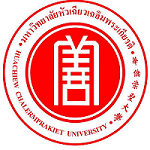Please use this identifier to cite or link to this item:
https://has.hcu.ac.th/jspui/handle/123456789/4720Full metadata record
| DC Field | Value | Language |
|---|---|---|
| dc.contributor.author | Panthip Rattanasinganchan | - |
| dc.contributor.author | Kittipat Sopitthummakhun | - |
| dc.contributor.author | Wicharn Janwitayanuchit | - |
| dc.contributor.author | ปานทิพย์ รัตนศิลป์กัลชาญ | - |
| dc.contributor.author | กิตติพัฒน์ โสภิตธรรมคุณ | - |
| dc.contributor.author | วิชาญ จันทร์วิทยานุชิต | - |
| dc.contributor.other | Huachiew Chalermprakiet University. Faculty of Medical Technology | en |
| dc.contributor.other | Huachiew Chalermprakiet University. Faculty of Science and Technology | en |
| dc.contributor.other | Huachiew Chalermprakiet University. Faculty of Pharmaceutical Sciences | en |
| dc.date.accessioned | 2025-10-27T08:53:22Z | - |
| dc.date.available | 2025-10-27T08:53:22Z | - |
| dc.date.issued | 2025 | - |
| dc.identifier.citation | Asia-Pacific Journal of Science and Technology 30, 4 (July-August 2025) : 1-11 | en |
| dc.identifier.uri | https://has.hcu.ac.th/jspui/handle/123456789/4720 | - |
| dc.description | สามารถเข้าถึงบทความฉบับเต็ม (Full Text) ได้ที่ : https://so01.tci-thaijo.org/index.php/APST/article/view/274078/180520 | en |
| dc.description.abstract | Mangifera indicaL. is a rich source of biological active compounds, prominently Mangiferin, characterized by its glycosylated xanthone structure. This compound is abundant in various edible sources, such as mango, and exhibits diverse biological activities. Extensive investigation into Mangiferin has highlighted antioxidant, anti-inflammatory, antidiabetic, anticancer, and antimicrobial properties. In this study, Mangiferin extract was prepared through maceration in 80% ethanol, yielding 1,628 g from an initial dry leaf mass of 4,234 g of dried leaf material. The ethanolic extract showed notabletorox equivalent antioxidant capacity(TEAC)values for 2,2-diphenyl-1-picrylhydrazyl(DPPH) and2,2'-azino-bis(3-ethylbenzothiazoline-6-sulfonic acid)(ABTS)assays, measured at 0.32 ± 0.03 and 0.56 ± 0.01 mM Trolox equivalents per gram dry material, respectively. The ferric reducing ability power(FRAP)value was determined to be 6.95 ± 0.40 mM FeSO4 per milligram dry material. 3-(4,5-dimethylthiazol-2-yl)-2,5-diphenyltetrazoliumbromide(MTT)assays conducted onhumanadult calcium temperature(HaCaT)cell line indicated that concentrations ranging from 3.90 to 31.25 μg/mL did not significantly impact cell viability. Evaluation of the wound healing of the Mangiferin ethanolic extract demonstrates a consistent decrease in wound area for treated cells compared to untreated controls, with significant decreases observed after 48 hours (p< 0.05).These findings support the antioxidant and wound healing properties of the Mangiferin ethanolic extract, underscoring its therapeutic potential in promoting wound repair. | en |
| dc.language.iso | en_US | en |
| dc.subject | Wound healing | en |
| dc.subject | การสมานแผล | en |
| dc.subject | Mangifera indica L. | en |
| dc.subject | Mangiferin | en |
| dc.subject | แมงจิเฟอริน | en |
| dc.subject | Antioxidants | en |
| dc.subject | สารต้านอนุมูลอิสระ | en |
| dc.subject | แอนติออกซิแดนท์ | en |
| dc.subject | Plant extracts | en |
| dc.subject | สารสกัดจากพืช | en |
| dc.subject | Keratinocytes | en |
| dc.subject | คีราติโนไซต์ | en |
| dc.subject | Mango – Leaves | en |
| dc.subject | มะม่วง – ใบ | en |
| dc.subject | Maceration | en |
| dc.subject | การแช่หมัก | en |
| dc.subject | Phenols | en |
| dc.subject | สารประกอบฟีนอล | en |
| dc.subject | Flavonoids | en |
| dc.subject | ฟลาโวนอยส์ | en |
| dc.title | In vitro antioxidant capacity, total phenolic and flavonoid contents, and wound healing potential in Mangifera indica L. leaf extracts | en |
| dc.type | Article | en |
| Appears in Collections: | Medical Technology - Articles Journals | |
Files in This Item:
| File | Description | Size | Format | |
|---|---|---|---|---|
| In-vitro-antioxidant-capacity-total-phenolic-and-flavonoid-contents-and-wound-healing-potential-in-Mangifera-indica-L.-leaf-extracts.pdf | 75.08 kB | Adobe PDF | View/Open |
Items in DSpace are protected by copyright, with all rights reserved, unless otherwise indicated.
